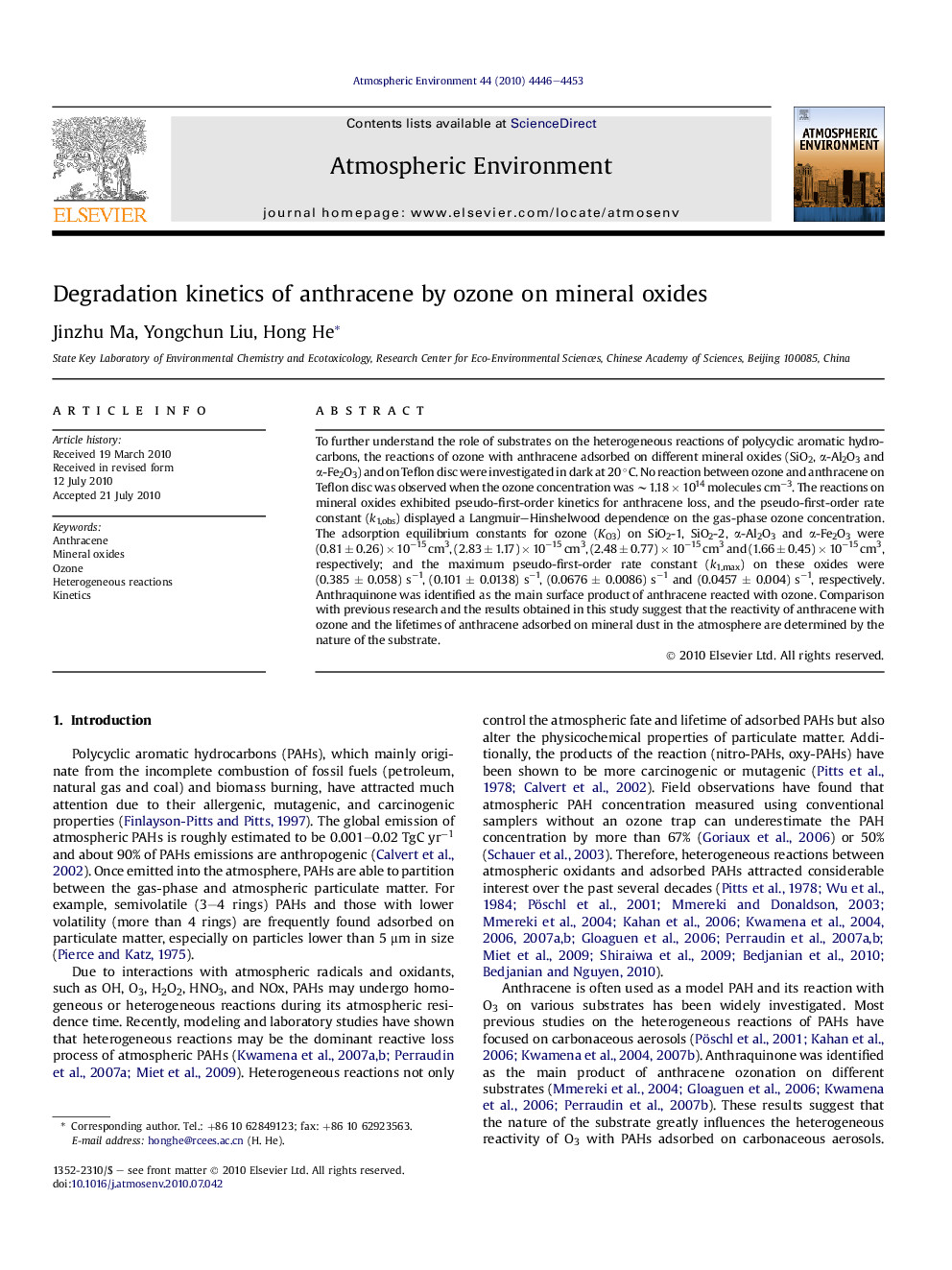| Article ID | Journal | Published Year | Pages | File Type |
|---|---|---|---|---|
| 4440426 | Atmospheric Environment | 2010 | 8 Pages |
To further understand the role of substrates on the heterogeneous reactions of polycyclic aromatic hydrocarbons, the reactions of ozone with anthracene adsorbed on different mineral oxides (SiO2, α-Al2O3 and α-Fe2O3) and on Teflon disc were investigated in dark at 20 °C. No reaction between ozone and anthracene on Teflon disc was observed when the ozone concentration was ∼1.18 × 1014 molecules cm−3. The reactions on mineral oxides exhibited pseudo-first-order kinetics for anthracene loss, and the pseudo-first-order rate constant (k1,obs) displayed a Langmuir–Hinshelwood dependence on the gas-phase ozone concentration. The adsorption equilibrium constants for ozone (KO3) on SiO2-1, SiO2-2, α-Al2O3 and α-Fe2O3 were (0.81 ± 0.26) × 10−15 cm3, (2.83 ± 1.17) × 10−15 cm3, (2.48 ± 0.77) × 10−15 cm3 and (1.66 ± 0.45) × 10−15 cm3, respectively; and the maximum pseudo-first-order rate constant (k1,max) on these oxides were (0.385 ± 0.058) s−1, (0.101 ± 0.0138) s−1, (0.0676 ± 0.0086) s−1 and (0.0457 ± 0.004) s−1, respectively. Anthraquinone was identified as the main surface product of anthracene reacted with ozone. Comparison with previous research and the results obtained in this study suggest that the reactivity of anthracene with ozone and the lifetimes of anthracene adsorbed on mineral dust in the atmosphere are determined by the nature of the substrate.
